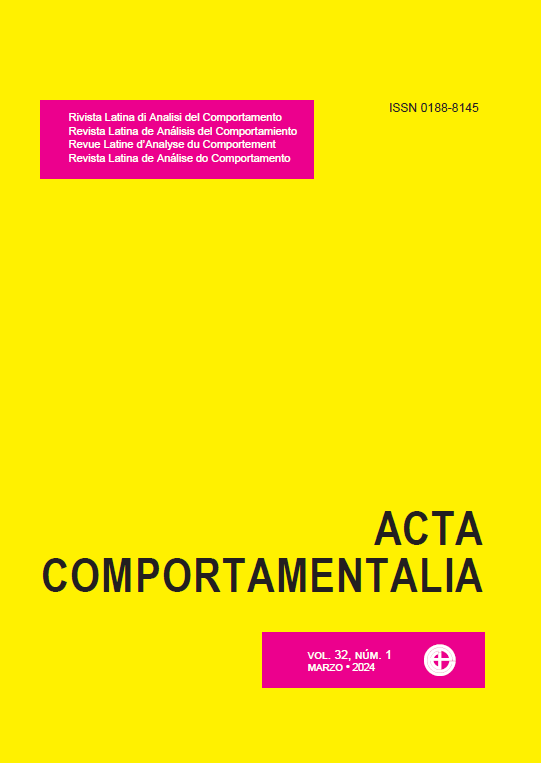Investigating the Prediction of a Version of the Good Behavior Game in a Home Environment
DOI:
https://doi.org/10.32870/ac.v32i1.87865Keywords:
Good Behavior Game, Applied Behavior Analysis, COVID-19, Say-Do-Report, family interactionsAbstract
The Good Behavior Game (GBG) has been a behavioral strategy highly tested in school settings to foster academic and prosocial behaviors among pupils. In addition, evidence has shown the game implementation is correlated with outcomes regarding the prevention of serious emotional and behavioral problems later in life. Some studies have evaluated and compared the effects of delivering points contingently to expected behaviors rather than unexpected ones or even rule violations. However, data has shown no marked differences on outcomes regarding those different ways the game can be implemented, except that focusing on “good” behaviors may increase its acceptability. This study aimed to test a GBG version based on delivering points contingently to “good” behaviors and strategies to facilitate the generalization of its effects. In addition, it was carried out in two home settings targeting relationships between mothers and their children. Due to COVID-19 stay-at-home orders, GBG implementation was done by the mothers with remote assistance provided by the first researcher. Thus, and overall, this study can be seen as a case for the feasibility of GBG implementation in home settings. To initiate GBG implementation, mothers from two families (namely, A and B) defined children´ behaviors and situations in the home routine they would like to change. For Family A, the behaviors defined were remaining seated and eating independently during lunches and dinners; for Family B, they were remaining seated, talking about one’s own task, and using one’s own task materials. In order to facilitate generalization effects, two strategies were implemented. First, a Say-Do-Report procedure (SDR) was employed before and after each session of game playing; second, some components of the game were gradually removed over GBG conditions. The SDR, when used consistently, can establish a discrimination between what was said and what was done by a person, and changes the likelihood of occurrence of nonverbal behavior by means of reinforcement of related verbal behavior, which, in turn, can facilitate the generalization of intervention effects when it is removed. In addition, the gradual removal of certain components of an intervention – since the intervention relies upon stimuli occurring both within it and other contexts – supposedly would facilitate generalization as well. The experimental design consisted of one baseline and three intervention phases. In the first intervention phase, all GBG components were implemented and then faded throughout subsequent two fading phases, so that only low-cost consequences (e.g., praises, family plays, and desserts) and SDR were maintained. Overall, results showed two main effects on direct measures: (1) the frequency of targeted behaviors gradually increased for all participants – except for remaining seated, for which two participants exhibited increasing tendency already at baseline – (2) and the variability in fluctuations of targeted behaviors decreased throughout intervention phases. In addition, responses to social validation questionnaires indicated high acceptability scores. Although systematic measures on generalization were not gathered, anecdotal data showed the occurrence of targeted behaviors in other places and game implementation in other contexts.
Downloads
Downloads
Published
How to Cite
Issue
Section
License

<a rel="license" href="http://creativecommons.org/licenses/by-nc-sa/4.0/"><img alt="Licencia de Creative Commons" style="border-width:0" src="https://i.creativecommons.org/l/by-nc-sa/4.0/88x31.png" /></a><br />Este obra está bajo una <a rel="license" href="http://creativecommons.org/licenses/by-nc-sa/4.0/">licencia de Creative Commons Reconocimiento-NoComercial-CompartirIgual 4.0 Internacional</a>.






